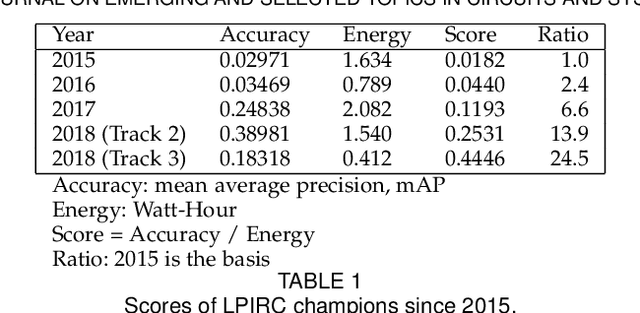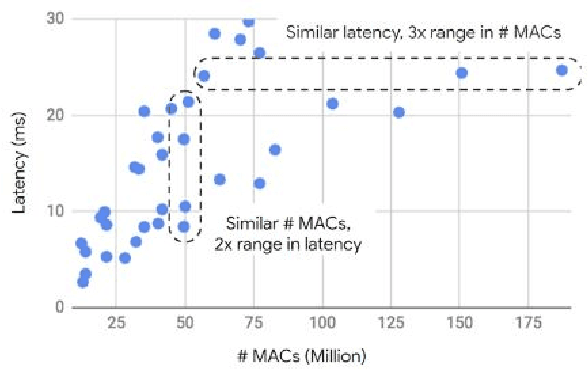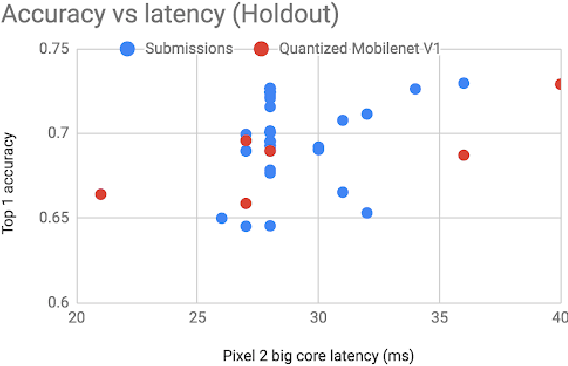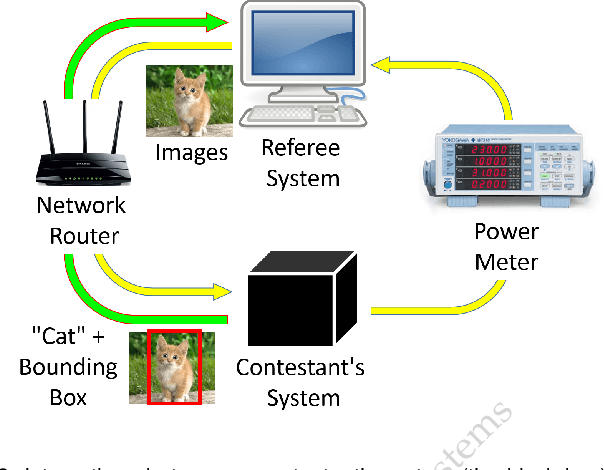Soonhoi Ha
S3NAS: Fast NPU-aware Neural Architecture Search Methodology
Sep 04, 2020Abstract:As the application area of convolutional neural networks (CNN) is growing in embedded devices, it becomes popular to use a hardware CNN accelerator, called neural processing unit (NPU), to achieve higher performance per watt than CPUs or GPUs. Recently, automated neural architecture search (NAS) emerges as the default technique to find a state-of-the-art CNN architecture with higher accuracy than manually-designed architectures for image classification. In this paper, we present a fast NPU-aware NAS methodology, called S3NAS, to find a CNN architecture with higher accuracy than the existing ones under a given latency constraint. It consists of three steps: supernet design, Single-Path NAS for fast architecture exploration, and scaling. To widen the search space of the supernet structure that consists of stages, we allow stages to have a different number of blocks and blocks to have parallel layers of different kernel sizes. For a fast neural architecture search, we apply a modified Single-Path NAS technique to the proposed supernet structure. In this step, we assume a shorter latency constraint than the required to reduce the search space and the search time. The last step is to scale up the network maximally within the latency constraint. For accurate latency estimation, an analytical latency estimator is devised, based on a cycle-level NPU simulator that runs an entire CNN considering the memory access overhead accurately. With the proposed methodology, we are able to find a network in 3 hours using TPUv3, which shows 82.72% top-1 accuracy on ImageNet with 11.66 ms latency. Code are released at https://github.com/cap-lab/S3NAS
Low-Power Computer Vision: Status, Challenges, Opportunities
Apr 15, 2019



Abstract:Computer vision has achieved impressive progress in recent years. Meanwhile, mobile phones have become the primary computing platforms for millions of people. In addition to mobile phones, many autonomous systems rely on visual data for making decisions and some of these systems have limited energy (such as unmanned aerial vehicles also called drones and mobile robots). These systems rely on batteries and energy efficiency is critical. This article serves two main purposes: (1) Examine the state-of-the-art for low-power solutions to detect objects in images. Since 2015, the IEEE Annual International Low-Power Image Recognition Challenge (LPIRC) has been held to identify the most energy-efficient computer vision solutions. This article summarizes 2018 winners' solutions. (2) Suggest directions for research as well as opportunities for low-power computer vision.
 Add to Chrome
Add to Chrome Add to Firefox
Add to Firefox Add to Edge
Add to Edge